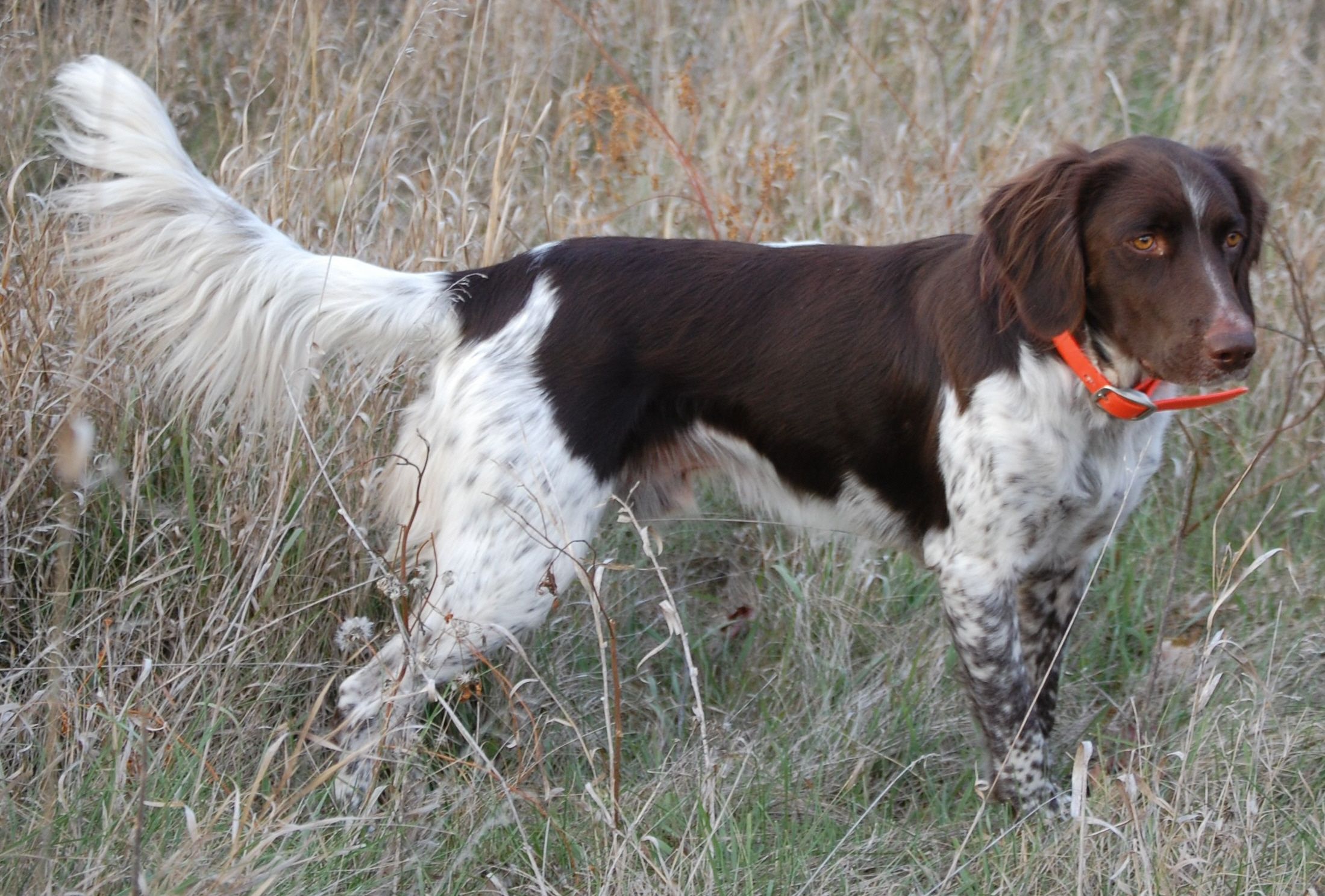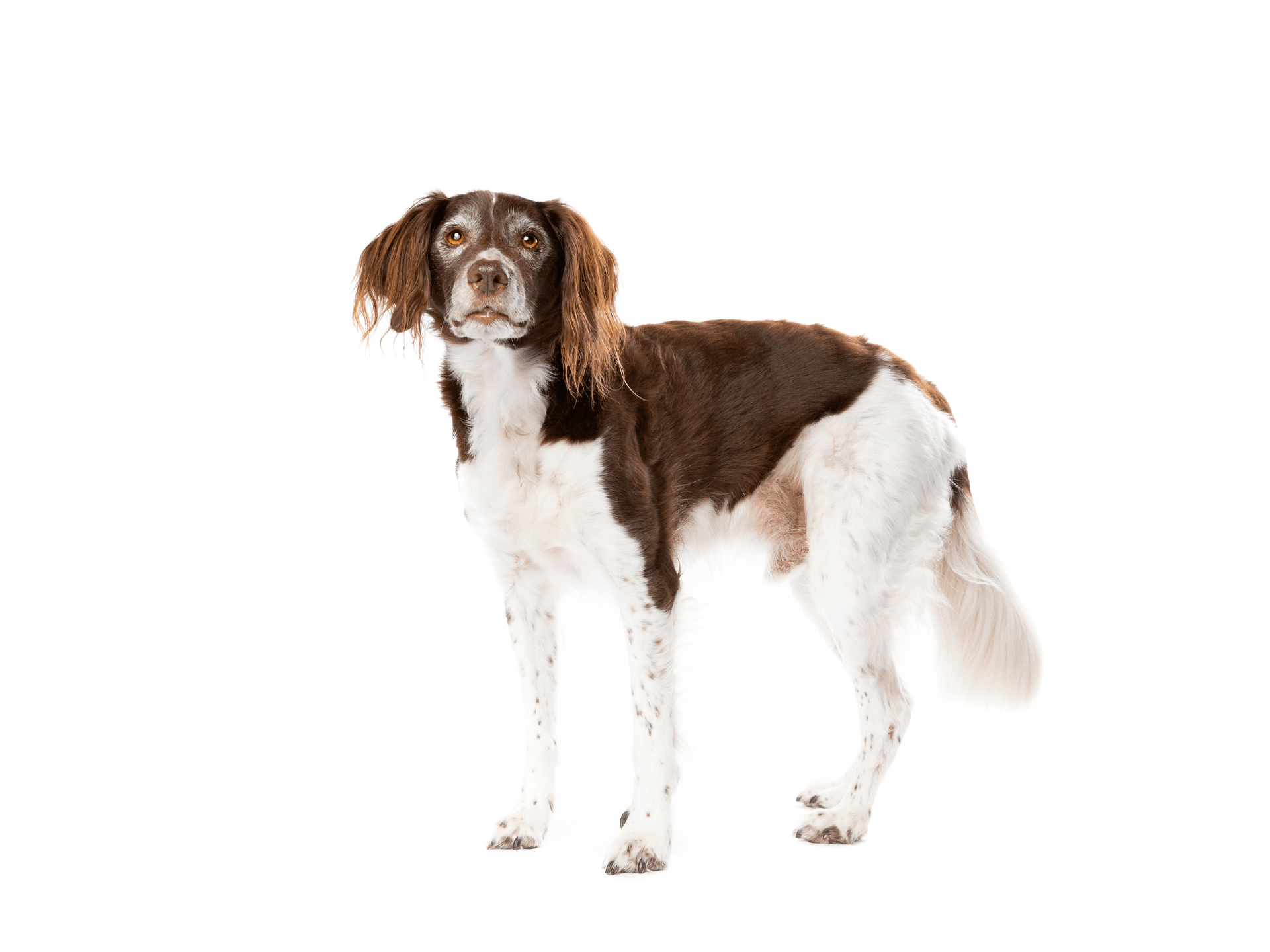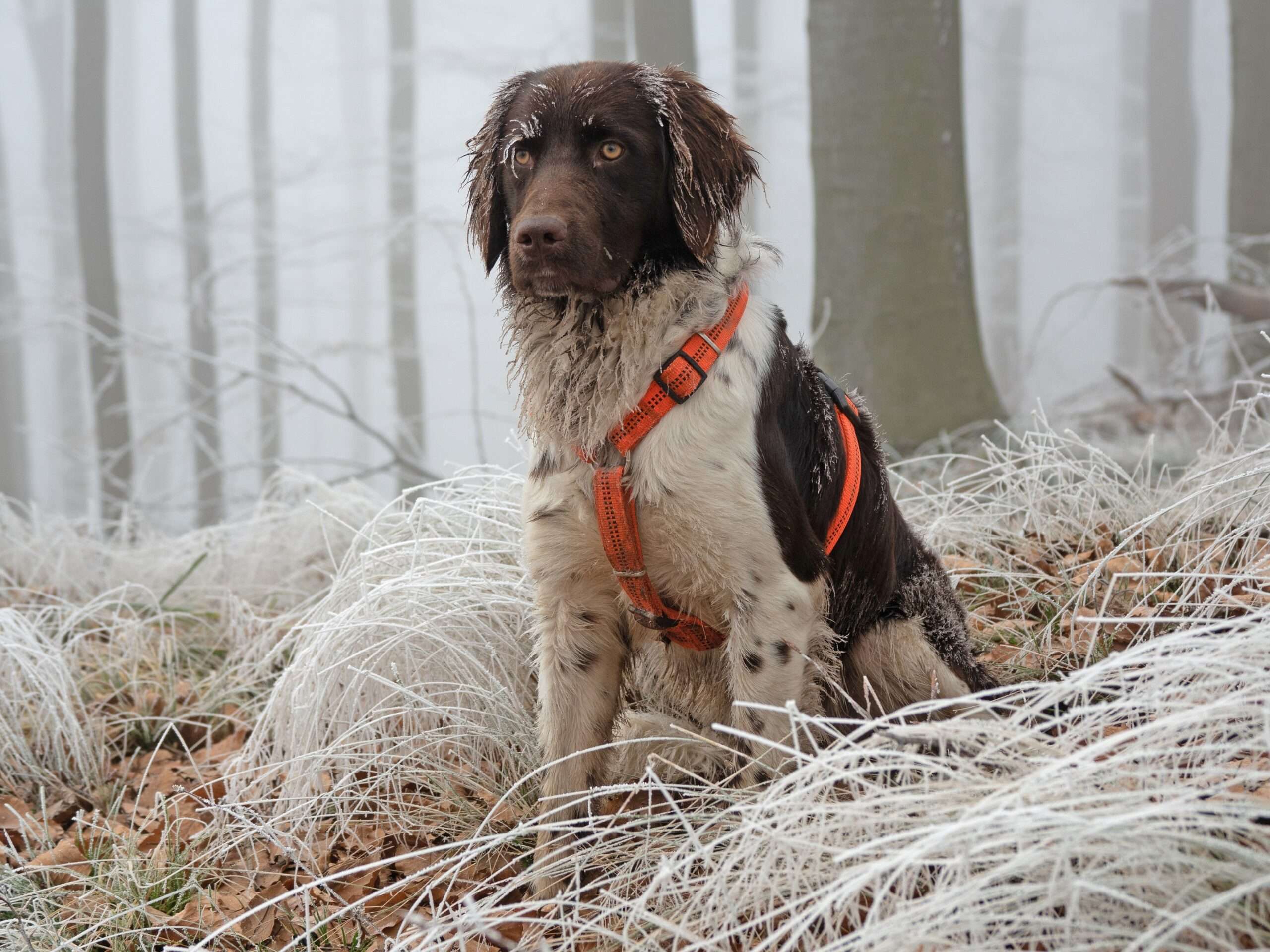
The Small Munsterlander Pointer (Kleiner Münsterländer in German) is a versatile hunting dog that originated in the Münster region of northwestern Germany. This breed was developed in the 19th century from longhaired hunting spaniels, with the goal of creating a dog capable of pointing, tracking, and retrieving both on land and in water.
The Small Munsterlander has remained closely tied to hunting traditions in Germany and is bred not just for appearance, but also for working ability, temperament, and trainability.
While less well-known than other hunting breeds like the German Shorthaired Pointer, the Small Munsterlander has a devoted following in Europe and is slowly gaining popularity in North America. Hunters and active families alike are drawn to the breed’s versatility, intelligence, and affectionate nature.
It remains a top choice for those seeking a multipurpose gundog that also fits well into family life.
The Small Munsterlander is a medium-sized, athletic dog with a noble expression and a graceful, balanced build.
• Height: 19–22 inches (48–56 cm)
• Weight: 35–60 pounds (16–27 kg)
• Build: Compact, muscular, and agile
• Coat: Medium-length, slightly wavy or straight with feathering on ears, tail, and legs
• Color: Brown and white, often with ticking or roaning; some may be solid brown with white markings
• Head: Slightly arched skull with a long, straight muzzle
• Eyes: Medium-sized, dark brown, intelligent expression
• Ears: Long, broad, and set high; lie flat against the head
• Tail: Long and feathered, carried level or slightly raised
Their coat provides protection in harsh weather and thick underbrush, while their balanced proportions support endurance and agility.
This breed is known for its energy, focus, and friendly disposition.
• Affectionate: Forms strong bonds with family and enjoys companionship.
• Intelligent: Quick to learn and eager to please.
• Energetic: Thrives on physical activity and mental stimulation.
• Versatile: Excels at pointing, retrieving, tracking, and swimming.
• Social: Generally good with children, dogs, and other pets when well socialized.
Their trainability and natural drive make them suitable for both work and play.

The Small Munsterlander is ideal for:
• Hunters seeking a compact, all-purpose gundog
• Active families who enjoy hiking, running, and outdoor adventures
• Owners looking for an affectionate and highly trainable companion
• Homes with space to roam and regular outlets for energy
However, it may not be ideal for:
• Inactive households or first-time dog owners without time for training
• Apartment living unless significant daily exercise is provided
• Owners looking for a low-maintenance or low-energy pet
The breed requires time, engagement, and consistent leadership to thrive.
• Exercise: High; at least 1–2 hours daily of active play or training.
• Training: Highly trainable with positive methods; early socialization is crucial.
• Grooming: Moderate; weekly brushing to manage feathering and seasonal shedding.
• Living Environment: Prefers homes with fenced yards or access to open space.
• Feeding: Balanced, high-protein diet suitable for medium-sized working dogs.
Engage their mind as much as their body through scent games, obedience work, and interactive play.
The Small Munsterlander is a generally healthy breed, though potential concerns include:
• Hip dysplasia
• Ear infections (due to floppy ears)
• Eye issues (rare)
The breed’s typical lifespan is 12 to 14 years, and responsible breeding practices support long-term health and temperament.

• Large Munsterlander: Bigger and heavier; both share similar functions and appearance but differ in size.
• German Shorthaired Pointer: More intense energy and shorter coat; Small Munsterlanders are softer in temperament.
• Brittany: Comparable in size and personality, though the Brittany is often more energetic and spontaneous.
If you seek a loyal, intelligent, and capable hunting or outdoor companion who also loves spending time with the family, the Small Munsterlander could be an ideal match. They require time, training, and activity — but offer boundless devotion and versatility in return.
Prospective owners should be ready for a long-term, interactive partnership with a dog that thrives on both purpose and affection.
Finding a well-bred Small Munsterlander may require contacting hunting dog clubs or breed-specific organizations. Prioritize breeders who focus on health, temperament, and working ability. Some dedicated rescue networks may also have available dogs.
United Pet Club offers microchip registration, training resources, and breed care tools to support owners of active sporting breeds.